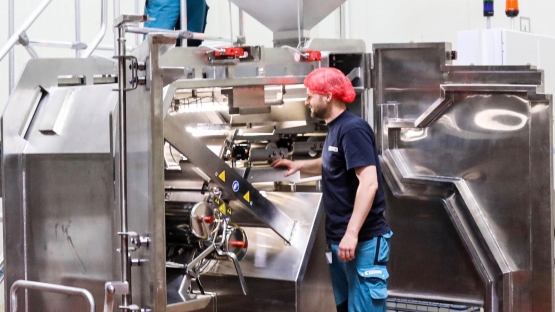The Joint FAO/IAEA Division of Nuclear Techniques in Food and Agriculture in collaboration with the IAEA Division of Physical and Chemical Sciences has launched a new five-year (2020-2025) Coordinated Research Project (CRP), entitled ‘Innovating Radiation Processing of Food with Low Energy Beams from Machine Sources’ (D61025). Those interested in undertaking research in this area should apply to take part. This CRP’s first Research Coordination Meeting is expected to take place in early 2021 in Vienna, Austria.
The food industry is seeking more sustainable solutions to ensure food safety and quality, while addressing the need to reduce a number of environmental impacts, namely, lower carbon dioxide emissions, lower energy consumption, more efficient use of water, and reduction in chemicals usage. This has led to a new approach to food irradiation using low energy beams, based on relatively small devices, that generate ionizing radiation with energies of hundreds of kilovolts.
Surface and near-surface layers of targeted products are effectively decontaminated by low energy electron beams (LEEBs) as evidenced by their application in the food packaging and healthcare sectors. Low energy x-ray lamps are now available and catering to blood irradiation programmes operated by healthcare and medical organizations, while some x-ray cabinet designs are being developed for phytosanitary treatments of fresh fruits and vegetables.
Using LEEBs and soft x-rays to irradiate food raises several scientific, technological and engineering challenges. These include the efficacy of the process, how microbes are affected, process control, and optimization. Targeting microorganisms residing on or near food surfaces (e.g. whole shell-eggs, raw whole cuts of meat and poultry, fresh vegetables, dried ingredients, dried herbs and spices) with LEEBs or using soft x-rays for phytosanitary applications can be both a sustainable and economically attractive option for the food industry. This technology will also lead to the relocation of food irradiation processes to the production line in food factories or packing facilities, since the low energy beams do not require heavy shielding. This contrasts with conventional food irradiation facilities at specialist off-site irradiation service-centres, using high energy (megavolt) electron beams, gamma or x-rays.
CRP Overall Objective
The research plan is detailed in an online report on the topic. The overall objective is to promote the innovation of “on-production-line” and “in-factory” radiation processing of foods using low energy ionizing radiation (hundreds of kilovolts), by preparing a solid technical and scientific foundation for the expansion of low energy electron beam and x-ray technologies for food applications.
Specific Research Objectives
- Develop dosimetry tools and techniques for low energy beams and for specific food items in collaboration with food industry partners;
- Accurately model and simulate low energy beam processes;
- Identify minimum and maximum target doses to achieve specific end-points on specific food products of commercial interest to the food industry;
- Understand effects on food quality (sensory, nutritional and chemical) with specific foods when exposed to low energy beams
- Delineate D10-values and mechanisms of inactivation of microorganisms and insects by low energy beam irradiation;
- Develop and optimize low energy beam sources and method(s) of product presentation to the beam(s);
- Conduct low energy beam acceptance studies that target consumers, retailers, wholesalers and distributors.
How to join this CRP
Up to 10 research contracts and 5 agreements will be awarded under this coordinated research project.
Please submit your Proposal for Research Contract or Agreement by email, no later than 31 October 2020, to the IAEA’s Research Contracts Administration Section, using the appropriate template on the CRA web portal. Note that the same template can be used for both research contract and technical contract.
For further information related to this CRP, potential applicants should use the contact form under the CRP page.


